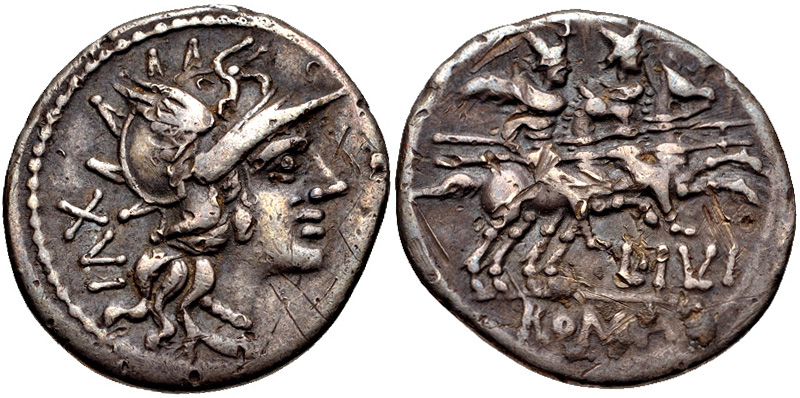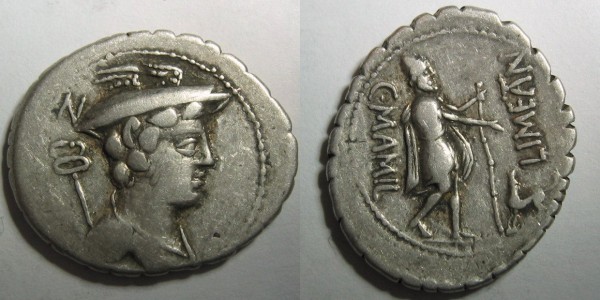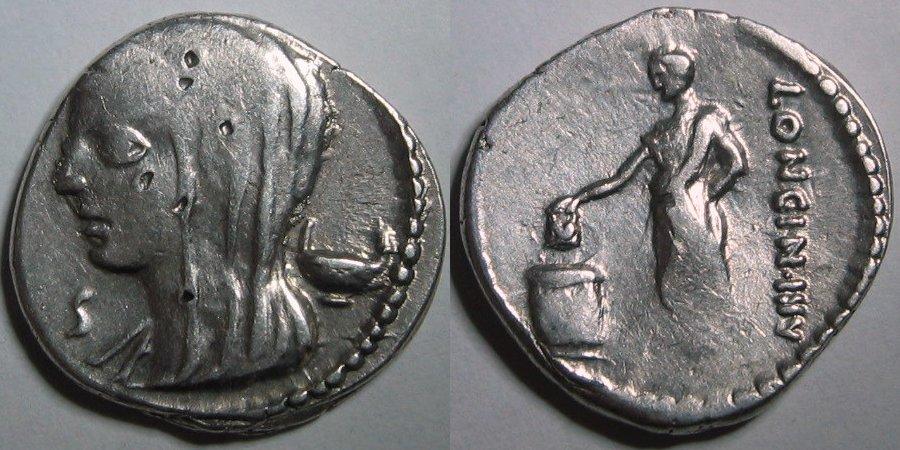One destination that had been on my bucket list for ages is New York - walk across the Brooklyn Bridge, catch a ferry to Staten Island, go up the Empire State Building, see the treasures in the Met, jog in Central Park and so on. Finally, in 2016 an excuse arose to go - a group of Roman Republican coin collectors invited me along to their annual brunch at the New York International Numismatic Convention (NYINC). The NYINC is a Mecca for ancient coin collectors with auctions, lectures and a large coin fair, lasting three or four days - 3 if you pay $20 ($15 if you print and bring along a coupon on the nyinc.info website) or 4 if you pay $125 for an early bird ticket to get in on the Thursday before the hoi polloi.
Discount coupon printed and packed, I was in the 3-day group
In 2016, I went for 3 nights, spent all my money, met some of the Uber collectors and saw the sights.
There were over 100 dealers, spread all over the wonderful Art Deco Waldorf Astoria hotel. I missed 2017, but made it again in 2018 and 2019. In 2018, I found the best pizzeria in maybe the world, Juliana's in Brooklyn. In 2019, I spent four nights there, dragging Annie along too. We saw Carrie Bradshaw's apartment and went to a great jazz gig with the Jimmy Heath Big Band - he was in his 90s and had played with many of the greats in a long career since the 1940s. Sadly, Jimmy passed away later in 2019, so we can only hope he's playing with them again. In fact, I only spent one hour at the actual coin fair From 2018, the NYINC has found a new home in the Grand Hyatt, beside Grand Central Terminal - the Waldorf is under refurbishment and may be more apartments than hotel when it reopens, so the Hyatt will remain the show's home.
Roll on the the 2020 event - this time travelling on my own again (NY in January is too cold for some) and back to a two-night trip. The plan was to fly over on the Friday morning, catch the fair on the Friday afternoon, the lunch on the Saturday, back to the fair and fly back on the Sunday night and straight to the office on Monday morning
Logistically, everything went perfectly - United from Dublin to Newark (previously, I'd gone to JFK with Delta), a train from the airport to Penn Station and a short walk to my hotel.
As a coin collector, one of the first things one notices in the U.S. is that notes are used much more than coins. While Ireland switched to the £1 coin in 1990 and we now have €1 and €2 coins, the $1 note or bill is very much alive and well in the U.S. The U.S. has minted billions of $1 coins in recent years, but they hardly circulate, being mostly encountered in vending machines. Within minutes of arriving at the airport, I had acquired nine $1 coins from such a machine - a selection of presidential dollars, two Sacagawea dollars and a Susan B. Anthony dollar, the first of the modern small dollar coins. The Susan B. Anthony dollar, minted only for four years - 1979 - 1981 and 1999, is cupro-nickel with a solid copper core, while the later dollars are also clad, but of brass over a copper core. The weights and electrical properties of these types of dollars are all the same, so they should all work in vending machines. The failure of the Suzie B to become a popular circulating coin was blamed on its similarity in size and colour to the 25c (quarter) coin, though it is larger and noticeably heavier. The more recent dollars are all a brassy colour and so unlikely to be mistaken for quarters, but are no more popular.
Anyway, with pockets jingling, I hopped on a train and thanks to the miracle of timezones was in Manhattan by 12.20 on what was a lovely crisp clear January afternoon.
Luckily, I could check in at my hotel close to Bryant Park, only a 10-minute walk from Penn Station. After a short siesta it was time to tackle the fair.
Registering involves producing photo' ID and getting a badge to wear around one's neck - this year, they got my name right, previously my middle name has served as a surname for the duration as I didn't notice that they'd misread my passport until I was happily wearing my new badge.
Unfortunately, I have no photos from inside the fair - but there were over 100 dealers, all selling ancient and foreign (i.e. non-U.S.) coins. The first day, I got a coin and a book and two cookies - shown in the first photo'. The coin from our own member, Del Parker, the book, the scarce Lindgren vol. I, covering bronze coins of Asia Minor and the Levant.
The cookies were sold by Alfredo de la Fe of Agora Auctions. His wife runs a cake decorating business and made several batches of cookies on ancient coin themes. I believe she projected images of coins onto the cookies and iced them by hand. I got two - the Akragas "tetradrachm" and the equally delicious Carthaginian stater below, with the prototype coin! The cookies got a little squashed on the return flight, but still tasted great :)
I didn't have a whole lot of time on the Friday, so went back to the hotel, dropped off my purchases and went in search of food and books. Strand Books, close to Union Square (it's at Broadway and E 12th Street), has 18 miles of bookshelves and many bargains. There are racks of books outside for $1 - $4 and many more inside. I picked up two books about telescopes and physics and repaired to a small pizza place where I stuffed my face with a couple of slices.
On Saturday, I had a walk along the High Line in the morning - it was nice, rather bracing walk in the fairly cold morning - I'm sure it's much more pleasant in summer!
I met with the usual gang of collectors for lunch - about a dozen of us this time, who'd brought along some prizes from the last year. It was good to see everyone again and catch up and see some treasures. I'd brought along a few recent acquisitions too - this is about the best of them, a denarius of 64 BC from the Mesagne Hoard found in 1980:
Most of the others at lunch are US-based, with one other Irish guy, though he's now based in London. A high percentage of us were engineers of one shade or other - maybe there's a connection between collecting and engineering. After about three hours of eating, drinking and passing around coins it was time to go into the snow again (it had started snowing shortly before lunch) and back to the fair.
Back at the fair I picked up two denarii from Harlan J. Berk and two books from Oliver Hoover's series Handbook of Greek Coinage (shown in the first picture) from Charles Davis.
Then back to the hotel to deposit the purchases and prepare for one of my favourite haunts in NY...
I discovered Juliana's in 2018 - my youngest sister spent a summer in New York on a J1 visa in 2001, just getting home before the September 11 attacks - since then, she has raved about the city and has been back a few times. She insisted I go to try a pizza in Grimaldi's in Brooklyn. Well, in 2016, I tried, but ended up in a Chinese restaurant instead In 2018, I crossed the bridge and found Grimaldi's - found it to be closed for Christmas holidays. However, almost next door was Juliana's pizza, with a queue of people snaking back in -7C temperatures. So, I queued and, because I was on my own, they led me through to sit at the counter beside the pizza oven. The pizza was wonderful - I returned to the hotel stuffed but happy and with half the pizza left to eat cold in the morning. I looked up Juliana's on the web and discovered that Patsy Grimaldi, of Grimaldi's pizzeria, had sold his business and retired. Grimaldi's had outgrown its original premises and moved to the larger building next door and, later again, Patsy had decided he wanted to get back into the pizza business. His old restaurant was again empty, so he opened up there, under his mother's name.
So, I'd ended up in the place Aoife had recommended, under the same management, but a new name! Tripadvisor users, I found, had rated Juliana's as the top pizzeria in the U.S. in 2015. I was a big fan of Dublin's Pizza Stop - since it closed, I have to go to New York for good pizza I returned with Annie in 2019 where she proclaimed the coffee to be up to standard, unlike the watery brown liquid served in most of New York.
Anyway, I'm a creature of habit, so had to return for more pizza. I caught a subway to the Manhattan end of the Brooklyn Bridge, walked across - looking back towards lower Manhattan, you can just see the Statue of Liberty in the distance here - and made my way to Juliana's.
Juliana's is close to the bridge and there was no queue this time, so soon I was seated at the counter and tucking into this!
It's as good as ever, I can confirm.
And that was it. I didn't go back to the fair on the Sunday - instead I went to Central Park, bought a camera lens in B&H and had a good walk around. On Sunday evening, I caught the flight back to Dublin and didn't quite make it to directly to work on the Monday morning - I went home to lie down first!






































